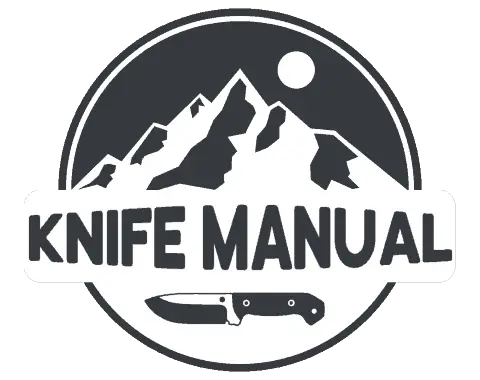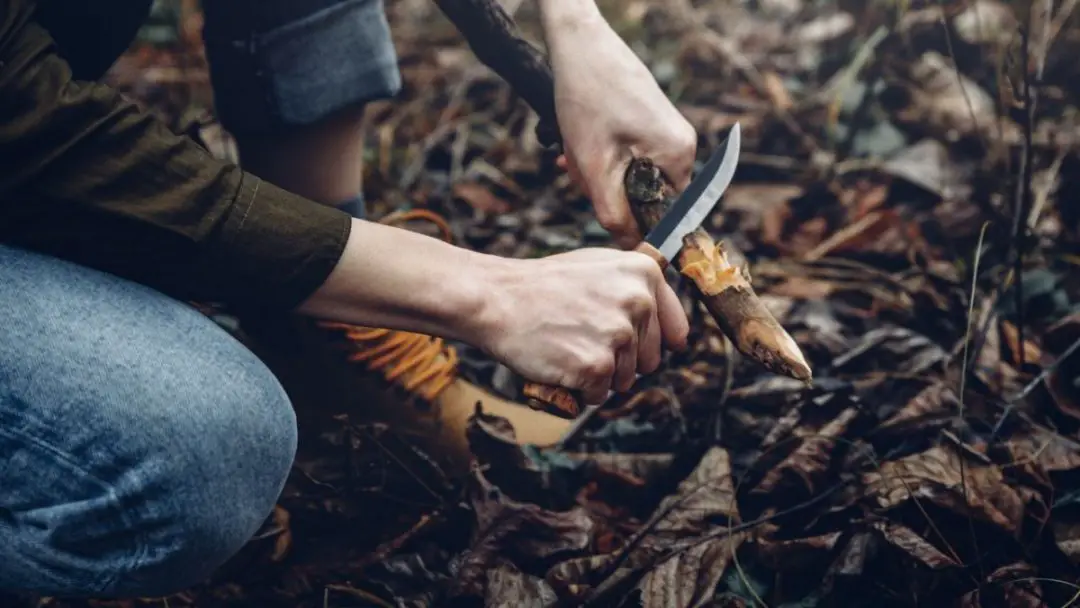
Survival knives are very useful and versatile tools, but sometimes it is difficult to think of and put into practice all of the tasks and things that a survival knife can do. After many years of camping and being in the outdoors with my survival knife, I’ve compiled a list of some of the most useful and practical ways that a survival knife can be used while out in the wilderness.
A survival knife is a very versatile tool that can accomplish many tasks. The basics that you need in the wilderness—shelter, fire, water, and food—all become a lot easier to get if you have your survival knife on you. All things considered, a survival knife is an essential tool if you are outdoors.
When you are out in the wilderness, you want a tool that is super durable, practical, and useful. A survival knife is like the perfect storm because it is lightweight and won’t weigh you down but is super versatile and can help you complete almost any task that you run into in the outdoors. Below are some of my favorite and the most useful ways that you can use your survival knife out in the wilderness.
Table of Contents
1. Striking a Ferro Rod
If you have a ferro rod with you when you are out in the woods, using your survival knife to strike it is a great option if you lost the striker that came with the rod or if it never had one. This is a great way to quickly start up a fire for warmth or for cooking food.
When you strike a ferro rod with a knife, using the spine of the blade is usually going to be the best option. Make sure that the spine of your survival knife is squared off and has a hard edge as well as that it does not have any type of coating or thick finish on the blade for the best experience striking a ferro rod.
2. Chopping Firewood
If your survival knife is large and strong enough, it can be used pretty effectively to chop firewood and small pieces of wood. Chopping can help you take down small trees and gather firewood very quickly because it is a fast and effective way to cut through almost any type of wood.
Just make sure that you have a firm grip on your knife before you try chopping with it so that you prevent any injuries from your hand slipping while you are chopping. It is also very important that you make sure that our knife is up to the task of chopping because this is a sure-fire way to snap it if your knife isn’t that strong and durable.
3. Making Stakes
Whether you are anchoring a tent or holding down a tarp for shelter, there are many situations where you need stakes to hold something down when you are out in the woods. Stakes are always something that you will forget to pack or don’t think that you need, but trust me, they are more useful than you might think.
Survival knives are super versatile and allow you to either carve a stake out of a piece of wood, or you could just stick the knife into the ground and use it as a stake. I would only use your knife as a stake in an absolute emergency because it could break the knife and it is way more useful for doing other tasks and not worth breaking for the sake of it being a stake.
4. Cutting Cordage and Rope
Any type of rope or cordage that you take with you into the wilderness is going to have to be pretty strong to stand up to the elements and the intensive tasks you will often use it for. Because the cordage and rope are so strong, if you have to break or take it down, it’s going to be a real pain if you don’t have a knife to cut it.
With a survival knife, the headache of breaking a really strong piece of rope or cordage becomes very easy because you can cut right through it with a simple slash or some light sawing motions.
5. Digging in Soft Dirt
While this is far from the best thing to put your survival knife through, if you really have to while you are out in the woods, you can dig using your knife’s blade. If you have to dig with your survival knife, make sure that it is soft dirt without rocks so that you don’t chip or break your knife.
This is great for cleaning out a fire pit, digging up edible plants and roots, and is just a great alternative if you forgot to pack a shovel or just need to do some light digging. Survival knives, in general, will do just fine digging in some soft dirt but be aware that it might dull or hurt your blade if you do it too often or if you hit rocks.
6. Shelter Building
Building a shelter is one of the most useful and most important things to do if you are spending time out in the wilderness. Having a really solid and structurally sound shelter allows you to have a nice place to relax, escape undesirable weather, and stay warm.
Survival knives are really great for helping you build a shelter in the woods. They can do almost any task that you might ever need to be done when constructing a basic shelter. A strong and durable survival knife can do everything from cutting wood to cutting leaves and grasses for waterproofing the roof and it just makes building a shelter a whole lot easier.
7. Making Fish Traps
There are many different designs and ways of making fish traps, but no matter what method you use, a survival knife will no doubt come in handy. Making fishing traps and trapping fish is a great way to acquire food in the wilderness because they often can be left alone and they still trap fish while you complete other tasks.
When you are building fish traps, you often have to cut and harvest small and flexible saplings to make the structure. Without a survival knife, this would be a hard and laborious task but with a good knife, harvesting small sticks and saplings is easy and can be done efficiently.
8. Cauterizing a Wound
This is one of the uses of a survival knife that you hope you never have to use, but at the same time, it is weirdly comforting to know that you have a tool that is able to do this if you ever are in the unfortunate situation. Cauterizing a wound is a great way to stop the bleeding in a serious injury, but is a rather dangerous procedure and you should only do it in an absolute emergency.
Cauterizing a wound involves a very hot source of heat or something super cold to press on a large wound to seal and heal it. In the case of a survival knife, simply heating it up in a campfire for a few minutes until it is nice and hot should do the trick. Do not try this unless you are a trained professional or are in a life or death survival situation.
9. Skinning an Animal
When you are out in the woods and you just hunted your dinner of a rabbit or other small game, a survival knife comes in really handy when it comes time to clean up your game. While a survival knife will never be as good as a great skinning knife, it will get the job done and can be quite effective.
There are many different methods and ways to skin an animal, and it really depends on your skill level and what animal you are skinning. Whatever way you choose, a survival knife is a really handy tool to help get the job done and can make the deed a lot easier and less of a headache.
10. Making Cordage
Cordage is an essential element and material to have with you when you are out in the wilderness. It can be used for a super wide variety of things such as shelter building, bow drill fire making, and a lot of other things.
Making cordage is actually quite simple once you learn how and practice a little bit. A survival knife is an essential tool when making cordage because it allows you to quickly and efficiently split and cut fibers of whatever you are making the cordage out of. If you don’t have a survival knife to prepare, split, and cut the fibers of the material you are working with, it can become a really big pain and cause a large headache that is avoidable with a simple survival knife.
11. Splitting and Batoning Wood
If you are making a shelter or processing firewood, you are going to need to split a piece of wood at some point. With a survival knife, this becomes a really simple process by using a method called batoning that is quick and easy. It does have its limitations though because you can only split wood that is smaller than the blade of your survival knife and you risk breaking your knife with dense and larger pieces of wood.
Batoning is an often argued topic in the wilderness and bushcraft communities because there is the potential to really hurt or snap your knife. But if you baton with your survival knife correctly, it can be a really helpful and useful skill that will save a lot of time when you are building a shelter, fire, or during many other tasks.
12. Making Tinder
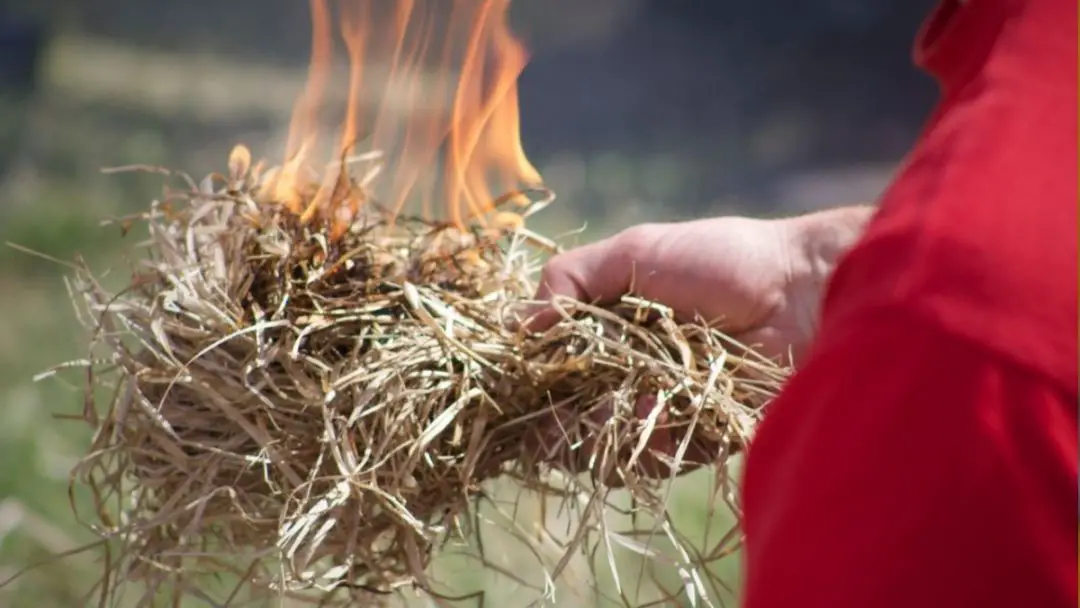
Tinder is a crucial part of making a fire in the wilderness and it needs to be super dry and fluffy. While it can sometimes be hard to find the perfect fire tinder naturally in the wild, with the help of a survival knife you can make some pretty easily and quickly.
Survival knives are great for making feather sticks and breaking up material for tinder. Feather sticks are when you take a dry stick and shave off thin shavings to create tinder for starting a fire. You can also use other materials for tinder such as bark, grasses, and a host of other things and a survival knife will just be a huge help in breaking up these materials and making them into usable tinder for starting a fire.
13. Used as a Hammer
Whether you are hammering stakes in the ground for a tent or shelter or really needing to hammer almost anything, a survival knife is a really great tool for the job. There are a variety of situations where hammering with your survival knife would be super useful and it can be used to pound various things and get things unstuck.
When you are hammering with a survival knife, you can either use the spine of the blade or the butt of the handle. Some survival knives have a metal pommel on the butt of the handle so that they can handle a lot of stress and hammering. Using the spine of the blade to hammer is not preferred because it might break the blade, but it is another option if you really need it.
14. Cleaning Fish
If you are out in the wilderness and there is a body of water with fish in it nearby, it can be a really great source of food and water (if it’s freshwater). However, when you catch a fish, it can sometimes be very difficult to clean and a survival knife can really come in handy.
There are many different ways to clean a fish and it really depends on what type of fish you caught, how many you have, and your skill level. But no matter what method of cleaning a fish you decide to use, a survival knife is a great tool to use to make the process a little bit easier. When you are skinning and cleaning fish, it is important to make sure that your knife is as sharp as possible so that it can cut through the fish easily and cleanly.
15. Making Utensils
Some people really like to keep their manners when they are out in the wilderness and prefer to use utensils to eat. But sometimes you will forget to pack your utensils or they will break and you will have to go without or make your own. Luckily, with a survival knife, it is pretty simple and quick to carve a fork or spoon out of some wood so that you can eat in style while out in the woods.
Making some utensils while out in the wilderness can range from very difficult to super simple depending on what utensils you make and your skill level. There are many different options that you could carve out of wood ranging from chopsticks, forks, spoons, and everything in between.
16. Clearing Brush and Branches
When you are out in the wilderness, there are usually no well-trodden paths to take and you often have to travel as-the-crow-flies through some pretty rough terrain. This can be especially difficult if there is a lot of underbrush and branches in your path. Many survival knives are really durable and can help you clear out some of the brush and branches so that you have a clearer path through the woods.
You can also use your survival knife to help clear out a campsite if you are spending a longer amount of time in the wilderness or just want a nice basecamp. With some simple chopping, you can have a clear path or campsite in no time with the use of a survival knife.
17. Markings and Signals
Traveling through the wilderness can sometimes be discombobulating and you can often lose your way and get lost. While you should always review the terrain and plan out your route ahead of time before going out into the wild, you can also use our survival knife to leave markers and signals along your path so that you can find your way out or so others can find you in the case of an emergency.
Carving arrows that point in the direction that you are traveling is a great way to leave markers along your path. There are also many other things that you could do to mark your path, but you just need to make sure that they are recognizable and very visible.
18. Making Hunting Spears
Survival knives are really great tools for carving and crafting hunting spears. With just a simple tree branch and your trusted survival knife, you can make a pretty awesome hunting spear in a very short amount of time. There are many different methods of hunting with a spear, but in my experience, they work best when you are spearfishing in shallow water.
Making a hunting spear with your survival knife in the wilderness can be as complicated or simple as you make it. Almost all spear designs start with a solid tree branch or piece of wood, but after that, you can simply sharpen the tip with your knife or go the more complicated route by flintknapping a stone tip for your spear.
19. Crack Open Nuts
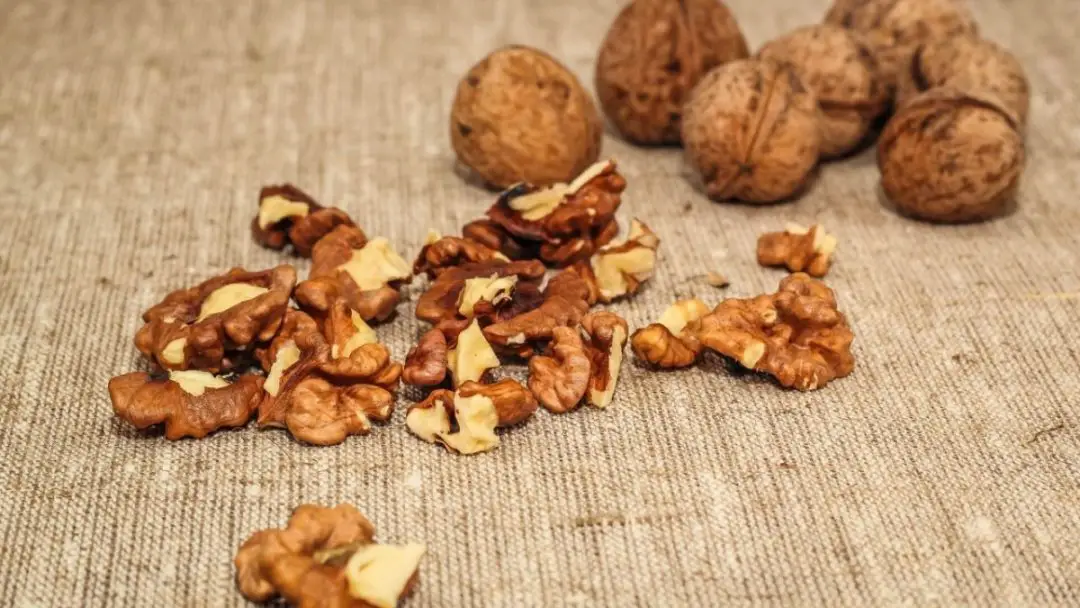
Finding food when you are out in the woods is an extremely hard and very tiring task. When you find edible nuts, it is very important and opening them up can sometimes be a little bit difficult. With your survival knife, cracking and cutting open edible nuts when you are out in the woods becomes super easy and is quite time-efficient.
There are many different ways that you could crack open nuts with your knife, and none of them are really any better than the others. Personally, I prefer to use the pommel on my survival knife, which is located at the butt of the handle, to crack open nuts but you could also use the spine of your knife blade. It really depends on what method works for you and which one you have the most success with.
20. Finding Dry Firewood
Making a fire in the rain or in wet conditions is hard enough on its own without the added task of finding dry firewood to feed your fire. With a survival knife, you are no longer left to search for dry firewood on the ground and hanging in tree branches. A sharp tool allows you to uncover and find dry wood that you can feed your fire that you would otherwise have skipped over or completely missed.
A survival knife allows you to break open dead tree trunks and logs to find the dry wood inside. You can also take pieces of wood and split them to expose the dry wood that is concealed within. If you have a survival knife with you when you are searching for dry firewood, it just opens up a lot more possibilities and options.
21. Speeding Up Burn Bowls
Burn bowls are a great and relatively passive way to make a bowl when you are out in the wilderness so that you can contain food and water easily. The one major downside to making a burn bowl is the amount of time that they take to make. Some burn bowls take upwards of eight hours to fully make.
Making a burn bowl is relatively simple, but it takes a lot of patience. The idea is that you place hot coals from a fire onto a piece of wood and it burns out an indention in the wood that you use as your bowl. This takes many hours but you can speed it up with a survival knife by prying out some of the wood to speed up the process. With a survival knife, you can actually make a burn bowl in a much shorter amount of time than it would take if you didn’t have one.
22. Cut Cloth Strips
There are many different uses for cloth strips and you really never know when you will need one. When you are out in the wilderness, if you need a piece of cloth for whatever reason you must take some from your shirt, pants, or whatever other cloth that you have on you or in your bag. Just ripping cloth off sometimes unravels that cloth and you often don’t get the shape that you were intending.
This problem when you tear cloth off of your shirt completely goes away if you have a survival knife with you. With a simple slash or cut, you can have the perfect piece of cloth in the exact shape that you need. This is just super efficient and allows you to focus on that task that you are trying to complete and not on such a minute thing such as getting a cloth strip.
23. Making Small Game Traps
Small game traps are a great way to passively catch food when you are out in the woods. They are really simple to make and set up, but the process becomes a whole lot easier if you have a solid survival knife with you.
There are a bunch of different small game trap designs, but one of my favorites is the figure four trap. These traps, and others, require some carving to be done on some sticks so that they fit together and are able to trigger and drop a hard object on the prey when they come to eat the bait that you set out. Small game traps can be really effective and are great for providing a little extra meat to your diet when you are out in the wilderness.
24. Modify Your Gear
Modifying your gear is a task that should help improve your time out in the wilderness and should help you complete tasks faster and be more efficient. A survival knife is an essential tool to help you do any modifications that you want in a timely and fast manner without spending a lot of wasted time trying to find the right tool to do what you need to do.
There are a large number of different gear modifications that people like to their gear and it really depends on personal preference. Personally, I absolutely hate any loose straps on a backpack so those are the first to go. Other people like modifying their knife sheath, backpack, clothing, and basically all of their other gear. You don’t have to modify your gear, but if you ever want to, a survival knife is a great tool to do so with.
25. Making a Bow and Arrow
When making a primitive bow and arrow for hunting, a survival knife is an invaluable tool to have with you because it will make the entire process a lot easier and less painful. There are a thousand ways to incorrectly make a bow and arrow, and having a good, solid survival knife to help you through the process of making a primitive bow and arrow is a must.
Don’t expect to make a perfect bow and arrow the first time you try to make on. I have spent many days and years trying to perfect my craftsmanship of primitive bows and arrows and I still don’t have it down reliably. While I wouldn’t depend on a primitive bow and arrow to provide all of your food if you are unsure of how to even make one, it can be done and a survival knife is a great tool to help you through the process.
26. Sharpen Another Knife
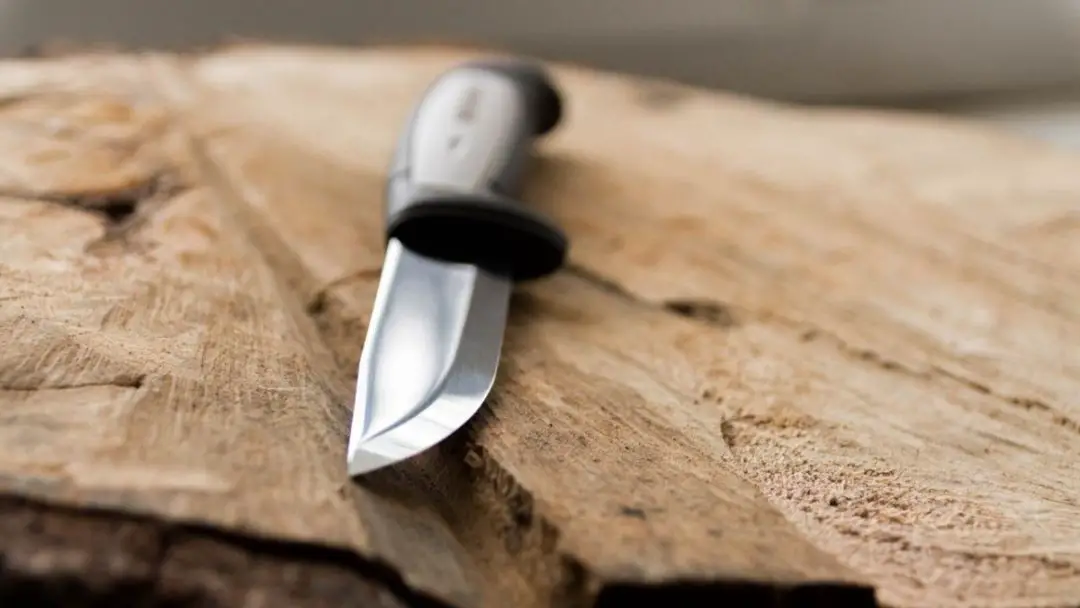
While this is far from the best case sharpening environment and scenario, you can actually sharpen another knife using a survival knife. It is far from ideal, but you can get the other knife sharp enough to act as a second knife in case of an emergency. It definitely doesn’t work as well as a sharpening stone or whetstone would, but it gets the job done.
Sharpening another knife on your survival knife is a pretty simple and straightforward process. Depending on the design of your survival knife, you will just run the other knife’s blade along the spine or cutting edge of your survival knife at about a 15-20 degree angle. After a little while of sharpening your other knife on your survival knife, it should be nice and sharp.
27. Self Protection and Defense
You hope it never comes down to it, but a survival knife can act as a pretty good self-defense and protection weapon if the need arises. While the main purpose of a survival knife is to be a really helpful and useful tool, like any sharp blade, it can be used effectively for defense and protection.
In the wilderness, there are so many things that you could come into contact with that could cause you to need to defend or protect yourself. There are just so many unknowns in the woods and having a good survival knife makes you that much safer and it can provide a certain level of comfort knowing that you have a sharp and strong blade in case the need arises.
28. Used as a Spear Head
Making a spear with a survival knife is a great way to make a tool that you can efficiently hunt small animals with. But sometimes you need a sharper tip for your spear and flintknapping just isn’t working out or you can’t find good stones to do it with. That’s where a sturdy and strong survival knife comes in.
While using your survival knife as a spearhead probably isn’t the best idea because you could break your knife, if it comes down to it, it could work pretty well. Using your shoelaces or some cordage, you can attach your knife to the end of your spear and use it just like you would a regular spear. Attaching a survival knife to the end of your spear provides you with a really strong and sharp tip that can help you hunt and take down your prey easier.
29. Make a Bow Drill Kit
Sometimes you need an alternative way to create fire than a fire striker or ferro rod, and a bow drill kit is often the perfect solution. Bow drill is a relatively complex fire making method and might take some practice at home before you go out into the woods to get good enough at it so that you can competently make a fire using it.
Creating a bow drill kit in the wilderness would be a complete nightmare without a really great survival knife. There are just many parts to a kit and almost all of them need to be carved in some way with a knife. While it is a little bit of a more advanced technique, a bow drill is a great thing to know how to do and a survival knife is essential to you succeeding in making a fire.
30. Pry and Leverage Objects
There is no telling when you will need to pry or leverage something, but a survival knife can do this pretty well. While you will want to be careful with how heavy the thing is that you are leveraging or prying because you might break the tip of your survival knife, but it is a super helpful thing that your knife can do and it might just save you some headache and trouble when you least expect it.
Whether you are prying open a dead log to get some bugs for fishing bait or you are trying to find some dry firewood within a dead tree, a good, sturdy, full tang survival knife should be able to handle it with little difficulty. Just make sure to take it slow and stop before you damage your knife because it could really break it and the last thing you want to happen out in the wilderness is your main survival tool to break.
31. Cooking Utensil
Just like you would with a kitchen knife in the kitchen, a survival knife can help you prepare and cook food when you are out in the woods. It might seem like a simple task for your survival knife to complete, but it is surprisingly useful and it comes in handy when you least expect it.
Preparing food in the wilderness can sometimes be hard because you don’t have any utensils or things to help you prepare food, but a survival knife can serve many purposes during food preparation. Whether you are cooking some meat on a stone in the fire or you have a cast-iron skillet with you, a survival knife can help you flip, stir, cut, chop, and basically do almost anything you might need when cooking.
32. Entertainment
When you are out in the wilderness, there is only so much physical activity that you can endure before you have to sit down and take a break. When you decide to take a break from all of the things and tasks that you have to do when you are out in the woods, it can sometimes get a little bit boring. That’s where your survival knife comes in.
There are many little games and tasks that you can complete using a survival knife when you are bored and tired. You can do everything from carving little figurines to seeing if you can make your blade stick in the ground consistently. There are countless little activities, games, and things to pass the time that you can do with your survival knife that will take some of your boredom aways and give you a little entertainment.
